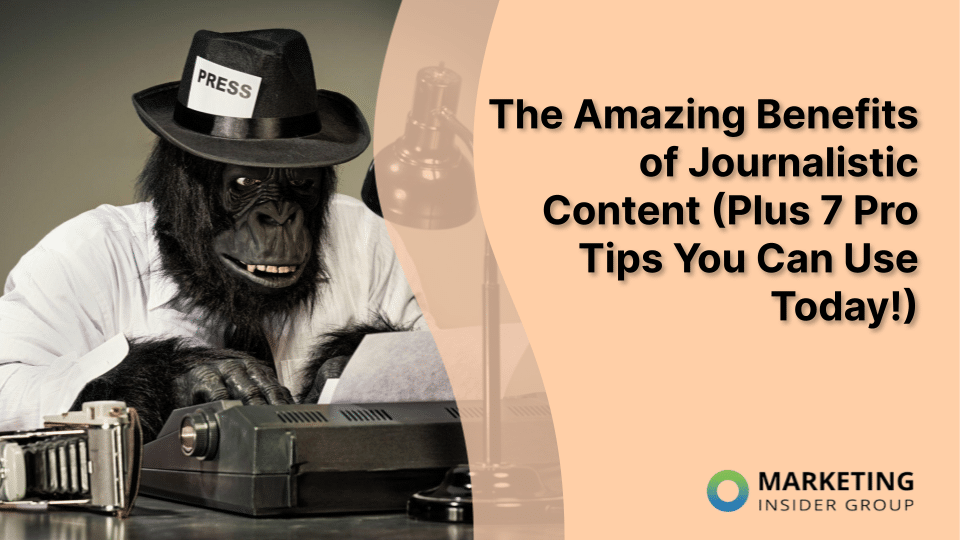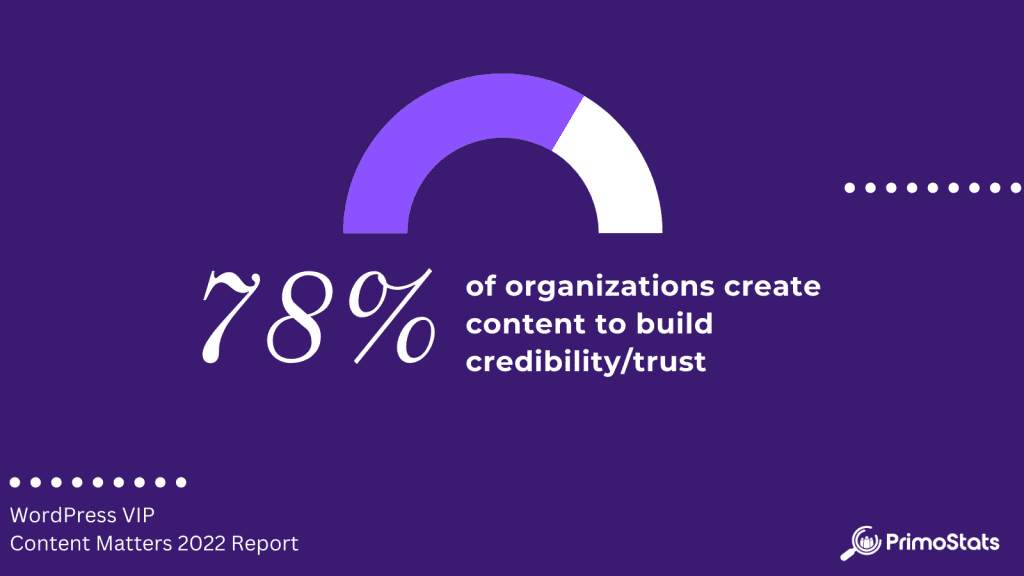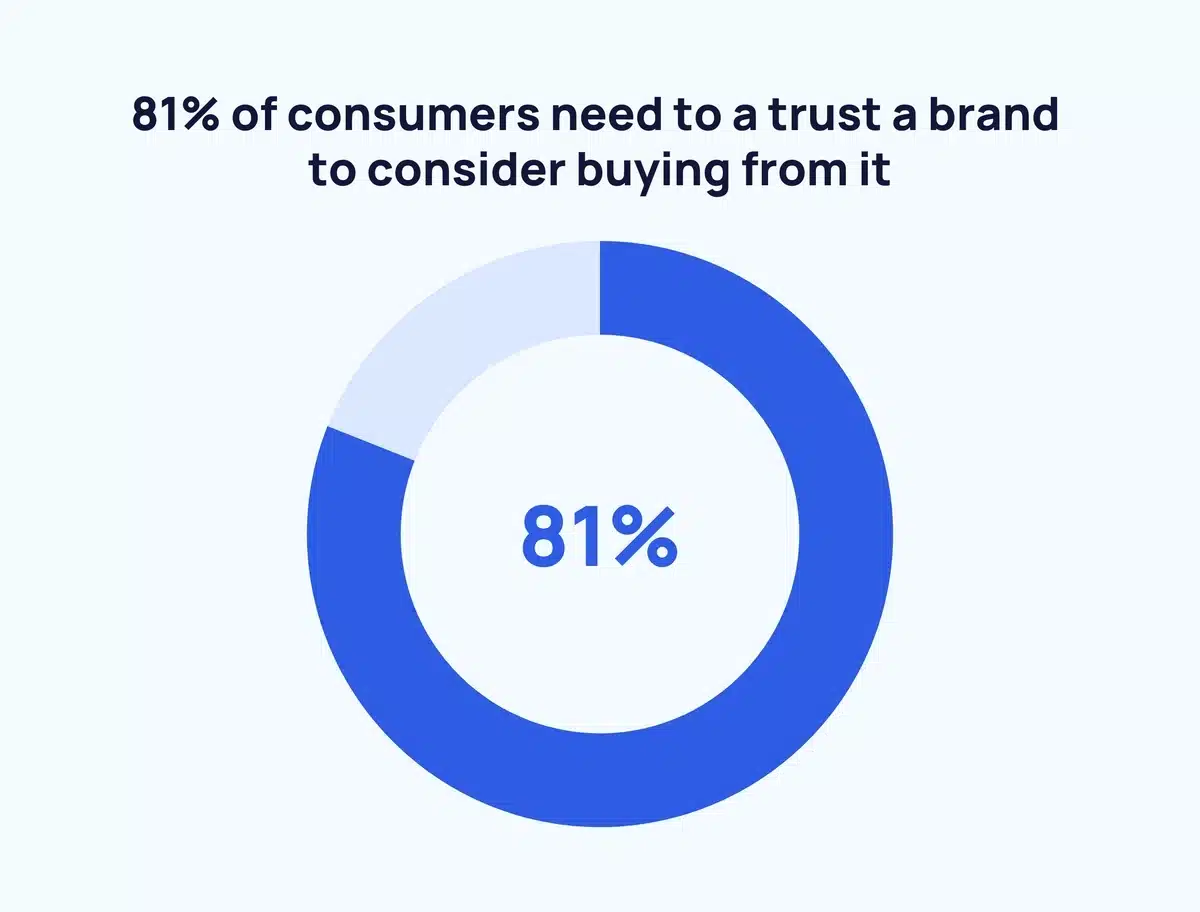
Would you like to attract the kind of passionate fanbase that the cable news networks have? Then, you should work with your marketing team on adding more journalistic content to your mix.
Buyers are turning away from salesy ads and overtly promotional media and gravitating toward content that is educational and informative. For example, a recent Demand Gen Report survey found that buyers want more insights, data, and research and fewer sales messages in content.

If you haven’t yet focused on adding a journalistic edge to your content, how can you start? Learn what creating content like a journalist really means and discover our best tips on how to do so.
Key Takeaways:
- Creating journalistic content means writing articles that adhere to high standards of integrity while telling a compelling story.
- Journalistic writing makes your content more credible and boosts your content creation productivity.
- You’ll attract better clients with journalistic content.
- Start creating journalistic content by getting to know your audience, referring to high-quality sources, and writing for readability.
Just What Is Journalistic Content?
In a nutshell, journalistic content involves applying the strategies and techniques that unbiased reporters use to capture audiences’ attention. Such material is concise, informative, credible, and timely.
Journalistic content also has a narrative throughline. Storytelling in content marketing makes the information more compelling than a bland statement of the facts.
How Do Journalism and Content Marketing Differ?
You should adopt many principles that guide journalists, but pure journalism and content marketing have essential differences.
| Journalists | Marketers |
|
|
|
|
|
|
You shouldn’t attempt to be so journalistic that you neglect your marketing goals. Still, you can put on your reporter’s hat to make your content even better.
What Are the Benefits of Regularly Publishing Journalistic Content?
When you publish journalistic content, you’ll quickly notice the following benefits.
More Compelling Stories
Which is more interesting: an official report listing the address where a fire occurred and the number of survivors or a riveting tale of how a firefighter battled the flames to rescue a trapped child? Reporters know how to get to the heart of a matter to touch readers emotionally.
For example, the official report about a fire may simply cause a person to shake their head over the travesty. A gripping retelling on a news site can move the community to rally in support of the victims with volunteer aid or donations.
When you add emotion and storytelling to your content as journalists do, your calls to action will be more effective. Higher conversions and more loyal clientele will follow.
Greater Credibility
Solid journalists understand how to tell great stories without being sensationalistic. Reliable sources and an authoritative tone engender trust, which is why people still revere past titans of news, such as Edward R. Murrow and Walter Cronkite.
Credibility is critical for journalistic content marketing. We’ve found that when your posts are educational and inspiring, your readers are more likely to trust you.

Higher Productivity
Newshounds live and die by deadlines because the public craves its daily fix of the latest info. As a result, reporters know how to discuss numerous topics for an endless supply of current events to share.
You probably don’t have anyone pressing you on a deadline for your blog post or newsletter, but content marketing is only effective when it’s consistent. As practice creating journalistic content, you’ll push yourself to push out high-quality posts regularly.
Additionally, when you take on a journalist’s mindset, you’ll have a neverending list of topics to write about. Your site will benefit from the wide variety of relevant subjects you publish.
Better Content
You’ve probably heard of the “10,000-hour rule,” which more or less states that practice still makes perfect (or at a minimum, professional). As you push yourself and your content team to work like a news outlet, the constant effort leads to an inevitable increase in quality.
Plus, if you mimic many of the journalistic standards, your writing can’t help but improve in quality. You’ll have a library of journalistic content that you can be proud of.
More Attention From Reputable Outlets
A rich supply of high-quality content means other sites will link to you, dramatically boosting your SEO. As you gain attention, you’ll attract guest posts from reputable names who want the positive attention you’re getting.
Further, you’ll receive requests to write articles for other sites or find that outlets more readily accept your pitches for a guest post. Your reputation will soar as a result.
Better, More Informed Clients
Raise your hand if you hate dealing with ignorant clients and prospects who constantly ask dumb questions and expect magical results for minimal expense.

When you create a regular stream of high-quality journalistic content, you attract better customers who are willing to pay for quality. You also educate your current clientele and prospects so that they understand what to expect from you.
How Can You Start Creating More Journalistic Content?
No doubt, journalistic content can do amazing things for your brand. Use the following seven tips to get better at it.
1. Learn About Your Audience
We seem to bring up this point in so many articles, but it’s the root of most problems businesses face when trying to create effective content. You have to know your audience.
Reporters focus on stories of local interest, so concentrate more on writing what your audience needs and wants to hear, not just what you think they should hear. To that end, use the latest martech tools to understand what content is gaining traction with your target audience.
2. Keep Your Eyes and Ears Open
Journalists are always looking for a good story. If you’re truly a thought leader who creates journalistic content, you should always be looking for what will fascinate the people in your niche.
According to Brian Honigman, the CEO of Honigman Media, “The benefit of a journalism background is that it teaches you the fundamentals of structuring and fleshing out a story so that you can apply it to any situation.”
Stay on the lookout for fascinating experiences, anecdotes, statistics, and images, and save them in a file. You can use these to bring an illustrative aspect to a factual subject.
3. Use Strong Headlines
It doesn’t matter how great your article is if no one clicks on it. That’s why reporters know how to create headlines that spark interest.
A strategy we like to use here is putting some emotionally charged language (like the word “amazing” in the title above). For online content, listicles are enduring popular, so use numbers when appropriate to build expectations.
A time element is also motivating. People are more likely to click when they see it’s something they can use “now,” “immediately,” or “today.”
4. Frontload and Break Up Your Content
The “F-shaped” format has become the gold standard for journalistic content. Readers start strong but scan the bottom of an article as attention starts to fade.
The image below shows where readers’ eyes spend the most time while reading an article. The red spots are the most viewed areas, while the blue spots are quickly scanned information.

So, how do you get an impact with longer articles (which we know both readers and SEO algorithms love)?
Journalistic content puts the critical information at the front of the article in an “inverted pyramid” style. The rest of the post can expound more fully for those who want to dig in deeper.
Use a generous amount of headings and bullet points to break up the material into mentally digestible chunks. Short, easy-to-read sentences also work best for holding attention.
Don’t forget to add images and videos to disrupt the monotony of text. Our clients who opt for visuals see the biggest boost in traffic.
5. Stick to High-Quality Sources
Use quotes from experts and references from reputable sources for more journalistic content and higher credibility. One technique we use here at MIG is to include a few statistics or reports early in an article and a few more throughout.
Nancy Mann Jackson, a content marketing writer and journalist, says about sources, “Always think about your goals and your audience for the piece.” She goes on to say, “Figure out what kind of research is necessary to reach the goals and provide value to the audience.”
So, avoid linking to Wikipedia, which uses anonymous posters and updates. However, you might find the site helpful to find links to verified sources. Also, carefully fact-check Google results and social media reports.
Another best practice is to stick to references within the last few years when possible. Using current statistics demonstrates that you update your site regularly and have the most recent and valuable information.
6. Mix Evergreen and Time-Sensitive Content
Journalistic content should be timely and deal with the issues that your audience is thinking about at the moment. However, to build SEO, you need posts with long-lasting value, even for the person who reads them weeks or months in the future.
Of course, some articles should be about upcoming events and recent newsworthy items. Still, try to frame these in a way that readers in the future can use them as an educational source.

7. Practice Objectivity
At the end of it all, you’re trying to sell your audience something. You know it, they know it, so don’t try to hide that fact.
Still, you don’t have to make it weird and pushy. If you put helping your audience first with journalistic content, then buyers are going to turn to you for assistance with their problems eventually because they trust you.
As Chief Marketing Officer of Paradox, Josh Zywien, states, “No fluff or marketing BS. Just good, honest information that helps them make better decisions.”
Start Creating More Journalistic Content Today With Help From MIG
Your content likely can’t go from 0 to 60 at a moment’s notice when you’re on your own, but you do have a way to start producing journalistic content immediately. Talk to us at Marketing Insider Group to consult on a journalistic content marketing strategy today!

0 Commentaires